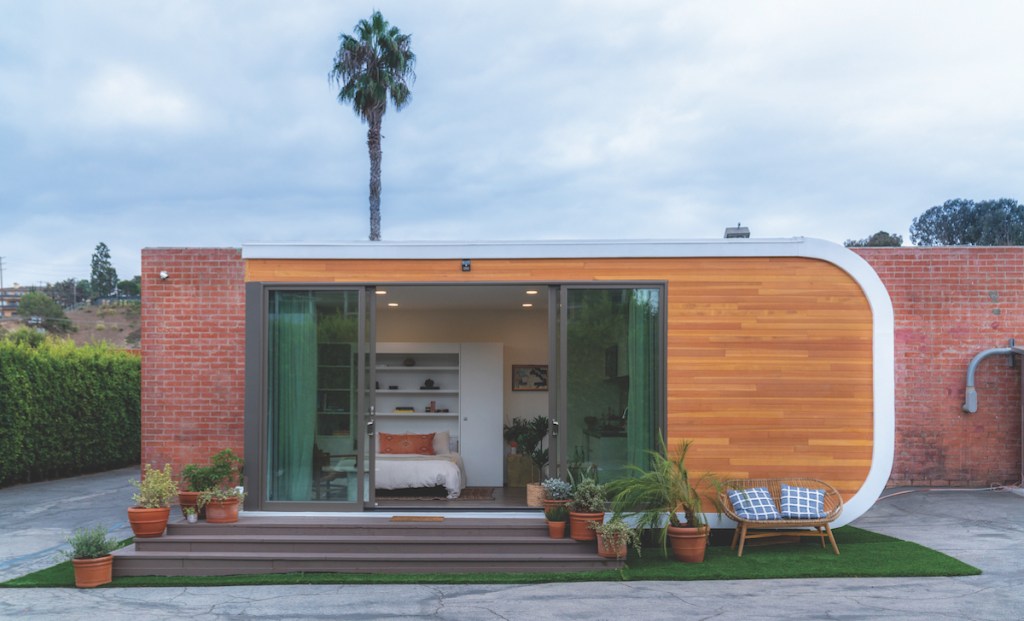Accessory dwelling units are increasingly legal. But are they affordable?
That’s the problem revealed by a report this month published by the University of Southern California Lusk Center for Real Estate and the Terner Center for Housing Innovation at University of California Berkeley.
Specifically, there is a high cost in constructing accessory dwelling units – or ADUs – which are secondary residences on a land parcel zoned for single-family housing.
State and local governments – and now Washington – frame ADUs as a prime vehicle to address a U.S. housing shortage that the National Association of Realtors pegged at 5.5 million fewer units than needed. The Joe Biden administration broadly identified this financing issue. But it is unclear what concrete steps the federal government may take.
“ADUs, though, less expensive than other forms of housing, require significant financial resources to construct,” asserted the study, which surveyed over 800 homeowners in California who built permitted ADUs.
The problem then, the authors found, is ascertaining favorable financing. Homeowners constructing an ADU – whose total build costs run over $150,000, according to the report – use cash out refinances, home equity loans, and renovation loans.
How to minimize tenant turnover using online property management tools
Turnover is a huge expense for landlords and property managers across the world. Here’s a look at why tenant turnover happens and how to prevent it in the future.
Presented by: TenantCloud
These loans come in at unfairly unfavorable terms, the study claims, because the government-sponsored enterprises back these loans omit important considerations, as do government lenders.
For example, while Fannie Mae and Freddie Mac generally recognize rental income in backing loans, they often do not consider rental income from ADUs to be stable income.
“Fannie Mae’s selling guidelines state that a borrow must qualify for a mortgage without considering any rental income from the ADU,” the report reads, adding that, “A limited carve out exists for low-income borrowers.”
Since June, Freddie Mac allows some ADU income to count as stable income for the borrower. “However, the rental income can account for no more than 30% of the borrower’s total stable income and the borrower must have either had landlord experience or taken a landlord training course,” the report reads.
Also, Federal Housing Administration and Veterans Affairs guidelines stipulate the borrower must occupy the home they are taking out the loan for. That closes the door on a borrower who seeks to lease out the ADU they’re building.
Consequently, the study found that the actual ADU’s being built come from people with the means to either pay all cash in constructing the secondary homes or absorb the lending terms.
The study comes at a time when affordable housing advocates and real estate professionals looking for a solution to the affordable housing crisis have begun to turn from simply campaigning to legalize ADU’s and to looking at their widespread feasibility.
An idea occasionally bandied about before, including the 1980s, to increase housing stock, ADU’s are also referred to as, “Granny flats” – a place to house the extended family.
But with almost nonexistent land available to build new single-family homes near job centers, the state of California moved toward legalizing ADUs, in the process overriding local zoning laws.
ADUs were legalized statewide in 2017. A subsequent California law declared, “Any covenant against ADU construction void and unenforceable.”
Oregon and Connecticut have followed suit in legalizing ADUs. But it has been mainly big cities taking action. Chicago, Seattle, Boston, Minneapolis, Washington, D.C., and Salt Lake City have each passed laws in the past two years legalizing ADUs.
Also, the Joe Biden administration in May announced a “Housing Supply Action Plan” that gestures toward ADU’s including a deployment of “new financing mechanisms to build and preserve more housing where financing gaps exist.”
The Federal Housing Administration and Federal Housing Finance Agency, which oversees government-sponsored giants Fannie Mae and Freddie Mac, “are exploring avenues to help lenders pilot and scale renovation and construction financing for ADUs.”
The Biden White House set a goal to create more than one million ADUs in the next five years.
Freddie Mac has put the number of ADUs nationally at about 1.5 million, but the number is over one year old. A Freddie Mac spokesperson said that the GSE does not have an updated figure.




